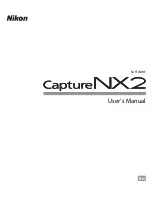
BGP Features
ExtremeWare XOS 10.1 Concepts Guide
211
Route Aggregation
Route aggregation is the process of combining the characteristics of several routes so that they are
advertised as a single route. Aggregation reduces the amount of information that a BGP speaker must
store and exchange with other BGP speakers. Reducing the information that is stored and exchanged
also reduces the size of the routing table.
Using Route Aggregation
To use BGP route aggregation:
1
Enable aggregation using the following command:
enable bgp aggregation
2
Create an aggregate route using the following commands:
configure bgp add aggregate-address {address-family [ipv4-unicast |
ipv4-multicast]} <ipaddress> {as-match | as-set} {summary-only} {advertise-policy
<policy>} {attribute-policy <policy>}
Using the Loopback Interface
If you are using BGP as your interior gateway protocol, you may decide to advertise the interface as
available, regardless of the status of any particular interface. The loopback interface can also be used for
EBGP multihop. Using the loopback interface eliminates multiple, unnecessary route changes.
BGP Peer Groups
You can use BGP peer groups to group together up to 512 BGP neighbors. All neighbors within the peer
group inherit the parameters of the BGP peer group. The following mandatory parameters are shared
by all neighbors in a peer group:
•
remote AS
•
source-interface
•
route-policy
•
send-community
•
next-hop-self
Each BGP peer group is assigned a unique name when it is created. To create or delete peer groups, use
the following command:
create bgp peer-group <peer-group-name>
delete bgp peer-group <peer-group-name>
Changes made to the parameters of a peer group are applied to all neighbors in the peer group.
Modifying the following parameters will automatically disable and enable the neighbors before changes
take effect:
•
remote-as
•
timer
•
source-interface
•
soft-in-reset
Summary of Contents for ExtremeWare XOS 10.1
Page 12: ...12 ExtremeWare XOS 10 1 Concepts Guide Contents...
Page 15: ...Part 1 Using ExtremeWare XOS...
Page 16: ......
Page 20: ...20 ExtremeWare XOS 10 1 Concepts Guide ExtremeWare XOS Overview...
Page 32: ...32 ExtremeWare XOS 10 1 Concepts Guide Accessing the Switch...
Page 74: ...74 ExtremeWare XOS 10 1 Concepts Guide Virtual LANs VLANs...
Page 80: ...80 ExtremeWare XOS 10 1 Concepts Guide Forwarding Database FDB...
Page 112: ...112 ExtremeWare XOS 10 1 Concepts Guide Status Monitoring and Statistics...
Page 133: ...Part 2 Using Switching and Routing Protocols...
Page 134: ......
Page 174: ...174 ExtremeWare XOS 10 1 Concepts Guide Virtual Router Redundancy Protocol...
Page 184: ...184 ExtremeWare XOS 10 1 Concepts Guide IP Unicast Routing...
Page 202: ...202 ExtremeWare XOS 10 1 Concepts Guide Interior Gateway Protocols...
Page 216: ...216 ExtremeWare XOS 10 1 Concepts Guide Exterior Gateway Routing Protocols...
Page 224: ...224 ExtremeWare XOS 10 1 Concepts Guide IP Multicast Routing...
Page 225: ...Part 3 Appendixes...
Page 226: ......
Page 234: ...234 ExtremeWare XOS 10 1 Concepts Guide Software Upgrade and Boot Options...
Page 242: ...242 ExtremeWare XOS 10 1 Concepts Guide Troubleshooting...
Page 256: ...4 ExtremeWare XOS 10 1 Concepts Guide Index of Commands...
















































